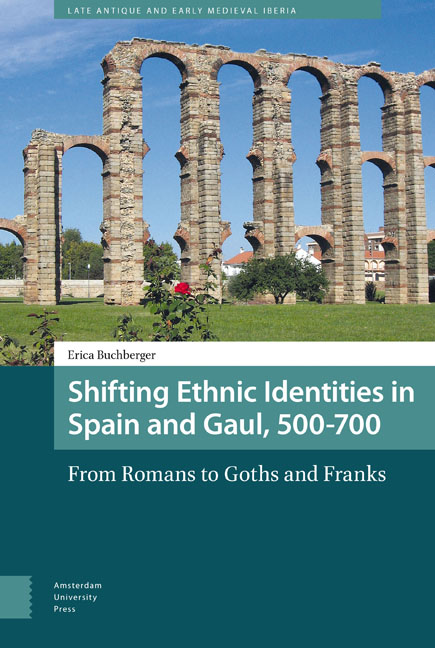2 - Church and State: Isidore and his Influence
Published online by Cambridge University Press: 12 February 2021
Summary
Isidore and John, in the late sixth and early seventh centuries, could describe contemporary Goths in a religious sense as Arians or new Catholics, in a political sense as subjects of the king, and in an ancestral sense as descending from earlier Goths. All of these options for identifying as Gothic enjoyed widespread currency at this time in Spain. This does not mean, however, that they all remained equally prevalent – and in fact, they did not. The sources for the first half of the seventh century reveal significant shifts in the use of each of these modes of identification.
Once Arianism was banned in 589, religious Gothicness came to be associated instead with Catholicism, and both Isidore and the monarchy endorsed this change. What prevailed alongside it was the political element of Gothic identity – again actively promoted. With these subjects united on religious terms, it became easier to envision them as a cohesive unit on political terms as well. The potential repertoire for identifying as Gothic had expanded and strengthened, and this period saw deliberate encouragement of all residents to redefine themselves as Goths.
This chapter follows the traces of this conscious linkage of Gothicness with Catholic faith and political loyalty. Isidore of Seville’s historical writings, which we have already encountered, offer considerable insight into the ways narrative could be put to work for the goal of common identity. In his role as a bishop, he had enormous influence over church policy in this area, as can be seen in the Fourth Council of Toledo. He was also very influential over fellow bishops and scholars like Braulio of Zaragoza, who continued his efforts in the following decades. Two other councils held in the years immediately following his death (Toledo V and VI) use the language and ideas set forth in Isidore’s time and set out the roles good kings should play in managing the unity of Visigothic society. By examining all of these sources, we will see the development of a common message during the mid-seventh century that all loyal, Catholic subjects could claim Gothic identity on both a religious and a political level.
- Type
- Chapter
- Information
- Shifting Ethnic Identities in Spain and Gaul, 500–700From Romans to Goths and Franks, pp. 67 - 80Publisher: Amsterdam University PressPrint publication year: 2017



